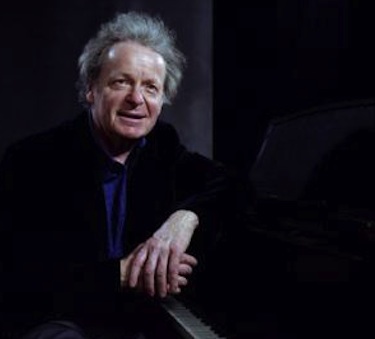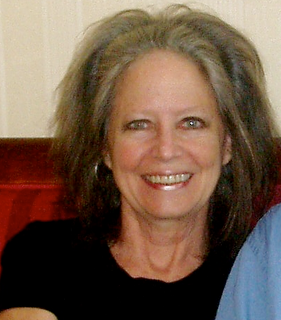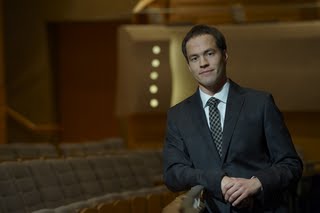Pianist Anton Kuerti's Beethoven Mesmerizes UT Austin Audience

Labels: Anton Kuerti, classical music blog, Ludwig van Beethoven, Texas Performing Arts

Labels: Anton Kuerti, classical music blog, Ludwig van Beethoven, Texas Performing Arts
 Photos (t.) Rainer Mockert
Photos (t.) Rainer MockertJ.S. There seems to be more and more operas presented on DVD nowadays. What do you think account for its rise in popularity?
B.R.: It has in part to do with advances in technology. Operas are now filmed in sharp High Definition Video, and more people have big flat-screen televisions which makes the viewing in 16:9 format far more pleasurable, and intense too.
There’s another important reason: opera singers these days are encouraged to give acting performances on stage. Gone are the days when the tenor planted himself downstage and spread his arms out wide to sing an aria. Modern directors expect acting from their singers. This makes an opera on DVD a dramatic experience. There’s actually more to see than an open mouth and pretty costumes.
A third reason which will no doubt raise a few hackles: Regietheater is producing many interesting stagings. It is in part thanks to the serious re-interpretations of great operas, that opera is more popular today. Opera-going used to be a cultural duty for many of those who could afford it. They knew what to expect. Now, with so much directorial talent available, every new production is awaited with anticipation and curiosity. Opera is no longer a museum event, it is a thriving art form, even if many of the operas were written a long time ago. Today’s productions are more challenging for the video director, but when they’re done well, the result can be great to watch.
J.S. How would you compare the experience of watching an opera at home on DVD, versus seeing it in the theater?
B.R.: Of course, there is nothing quite like seeing an opera in the theatre. But there are disadvantages too, the most obvious being that you’re always seeing the long shot. And depending on where you’re sitting, you may miss a lot of directorial nuances which give a production its effect. At home, you’re seeing a range of different shots, from close ups to medium shots and long shots, or the establishing shot. The job of the video director is to enter the production, so that the viewer has a dramatic perspective he may not get in the theatre, without losing the value of the whole. Of course I determine what the viewer will see, but I always try to remain true to the production. Because my background is the cinema, I try to direct opera productions with the cinematic experience in mind. For instance, I am just as interested in reaction shots as I am in the shot of the person singing. When I edit, I edit the material like a film. I also try to make the shots themselves interesting. There’s more going on in directing a production than coverage and reportage.
J.S. I noticed a huge difference in older opera videos compared to the videos today, which have many more closeup shots than the past. How do you balance closeups versus the "big picture" ? I noticed that with some of the more recent opera videos, one doesn't always get a sense of the scale of the production.... everything is closeup... what is your view on this? What do you think of the use of split screens like the Met Tristan telecast last March?
B.R.: Balance is the key word. You try to establish the mise-en-scene and then you go closer. I am not a big fan of extreme close-ups, or what I call the ‘singing head’ shot. For one thing, there are issues, such as make-up, sweat, gold-capped molars. But more than that, an extreme close-up has the effect of removing the singer from his context, which is the stage. Operas are not talk shows or news broadcasts: They occur on a stage, where things are happening. The singer may be doing something interesting with his hands, or with his body, so I like to show that as well. I prefer the medium close shot, which gives you more of the singer’s body than his open mouth. I do use extreme close-ups occasionally but there has to be a good reason for it. Close-ups can be interesting if it’s a particularly momentous part of the libretto. But even then, I prefer to move in to a close-up rather than abruptly cut to one.
One always has to occasionally return to the master shot, so that that viewer doesn’t lose his or her orientation. But I also use what I call mini-masters, which show an area of the stage where things are happening. Context is everything when choosing a shot.
As for split screens: I didn’t see the Met broadcast, but my feeling is the same as it is for split screens in the cinema—a way to compensate for lack of preparation. In an opera, the split screen immediately removes the viewer from the cinematic experience. It’s a device that doesn’t belong: It calls attention to itself. The only use of it that I condone is in a concert broadcast. I recently saw a concert with Cecilia Bartoli which made clever use of split screens. In this case, it was a welcome addition to customary concert broadcasts, which can be very predictable and rather boring. And a concert is not a narrative entity like an opera—you have more freedom to experiment.
J.S. As a video director, do you try to present the production "faithfully" , or do you have a special "take" or "concept" in how a particular production should look on the home screen?
B.R.: I try to make the best film possible of the production, one which succeeds on its own terms but which remains faithful to the production.
J.S. Obviously some productions are going to be more "video-genic" than others. How do you deal with that? Do you see your job as trying to make a production look as good as possible? Do you think the videographer can (or should) improve on the original?
B.R.: Sometimes. But it isn’t necessarily because the production isn’t ‘video-genic’ as you call it. An interesting case in point: the revolving stage in the Dessau Tristan and Isolde was certainly effective in the theatre. But on video it becomes vividly cinematic, in a way that could not be experienced in the theatre. Especially the finale of Act I and the beginning of Act 2 create the effect of travelling shots, giving the production added kinetic intensity.
Another case in point: Vladimir Deshevov’s ICE AND STEEL has a huge cast, may of whom have solo parts. There is so much going on onstage that an audience might only get some of what’s going on. I was able to make far more of it available through judicious choices of shots. I certainly didn’t improve on the original, which was magnificent. But I made more of it available.
Every new production has its own set of challenges for the video director. You have to be flexible and daring at the same time.
J.S. Do you have complete artistic freedom in capturing the performance? Or do you believe the stage director's ideas come first?
B.R.: I have complete artistic freedom, but I always try to be at the service of the stage director’s work. When I am finished with editing the material, I invite the stage director to look at it. So far, all of the directors whose work I have filmed have been pleased with the result. I am always open to suggestions, but they are rare—and often good.
J.S. What is your views on the current Regietheater aesthetic? Do you think all operas can be (or should be) "updated"? I am thinking of the Bregenz Aida that I just saw on TV, or the Munich Lucrezia you saw, or the Konwitschny Don Carlos from Vienna and Barcelona. What do you think of these updating?
B.R.: There is a misconception about Regietheater that it’s all about blood and guts, trenchcoats and black leather jackets. Regietheater is not about making motorcycle molls out of the Valkyries, although that is precisely what Götz Friedrich did nearly 30 years ago. Regietheater is about a serious appraisal of the dramatic elements of an opera.
I am a big fan of Regietheater as long as it’s good--and a lot of it is great. And I think that opera has gained a wider audience because of it. There’s a tendency in America to bash Regietheater as ‘Eurotrash’. To prove their points, critics always point to the most egregious examples, as Heather MacDonald did a few years ago in City magazine; and more recently, the novelist Daniel Kehlman, bashed Regietheater in a speech at the opening of this year’s Salzburg Festival. But operas staged the original way seem quaint, possibly enjoyable as déjà vu, but irrelevant and often boring. Updating them can certainly do operas no harm, and if successful, can actually make a work written one or two centuries ago, seem astonishingly of the moment.
Regietheater has less to do with updating than it does with intensifying the dramaturgy of an opera, and going deeper into the work. There are examples of Regietheater which do not update, but which apply 21st century aesthetics to achieve the mise-en-scene.
Wouldn’t life be boring if every production of Wagner’s RING OF THE NIBELUNG took place on a Styrofoam rock? There are far deeper investigations of that great work being produced all over the world, without a rock in sight. And the work is resilient enough to accommodate many more interpretations.
J.S. Of your many past projects, which one(s) are you most proud of?
B.R.: This is a difficult question to answer. I love all my children (nine, so far), but for different reasons. I am proudest of the Weimar RING OF THE NIBELUNG because it was such a fantastic complex staging enriched by magnificent acting. I am also proud of ICE AND STEEL because I only had one go at it, the last performance, and was able to capture everything I wanted in spite of the huge cast and complicated staging. And for sheer beauty, I am proud of AGRIPPINA, which will be released later this year. It was a gorgeous, funny and profoundly moving stage production and I dare to say that about the video as well.
J.S. I personally find including interviews of performers, conductor and particularly the director very important in a DVD release. I want to hear what they have to say. (I missed that in the Dessau Tristan and the Weimar Rheingold) Failing that, perhaps an essay by the director, or some sort of a Q & A, in the program booklet would be very helpful. Would you consider adding these in future projects?
R.M.: I agree and we hope we can add material like this in the future. It is not easy to do this in each case, because we tape performances at a time when the stage director has already left. We see him or her only during the final editing period. Next season we will be more around during the opening nights and final rehearsals, so that we will definitely shoot additional material. We also hope to add portraits of the cities where the opera houses are located..
J.S. What new projects are you working on?
R.M.: Later this year a new classical DVD label will be launched by a well- established feature film DVD company, VCL. The new label, VCL KLASSIK, will be distributed worldwide. VCL has broadened its scope in the last few years, producing more special interest DVDs in the area of Art, Health, Sport, Architecture, Nature, Animals and Travelling guides. With VCL Klassik, VCL hopes to make new as well as hitherto unreleased concerts and operas available to a worldwide audience.
The program will be a good mixture of well known titles and titles which are not on DVD, or only as old productions. The new productions will be chosen from the best produced in Europe in a given season.
We are preparing five new productions for this year and are in the closing stage with the theatres. With each new production that is released, an archive title acquired from existing license stocks will be released for the first time on DVD. VCL Klassik plans to release at least 12 new productions and 12 archive titles every year.
In Germany, Austria and Switzerland we are lucky to have over 250 opera houses, and therefore a lot of possibilities. The opera houses also benefit from the DVD. And the exposure is extremely helpful in finding new sponsors in addition to public funding and ticket sales.
Labels: Brooks Riley, Rainer Mockert, Zoom Production
Labels: Jaques Hétu
Labels: Salzburg Easter Festival
 COC Music Director Johannes Debus conducts RCM Orchestra on Feb. 12.
COC Music Director Johannes Debus conducts RCM Orchestra on Feb. 12.Labels: Aldeburgh Connection, Angela Hewitt, Douglas Boyd, Johannes Debus, Karina Gauvin, RCM Orchestra, Veronica Tenant